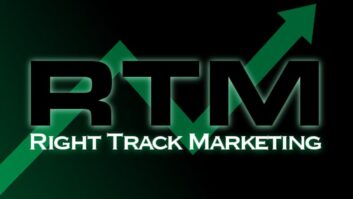Field Report: Digigram Cancun 222-Mic
Oct 1, 2012 12:51 PM, By Chris Wygal, CBRE
The Digigram Cancun 222-Mic USB audio interface is lightweight, has plenty of professional functionality, and its thin, sleek design makes it perfect for desktop reachability and it fits nicely into a laptop bag.

Functionality, productivity and usability are three words we use to describe the design and practicality of broadcast and recording equipment. Does it work? Will it help workflow? Is it user friendly? Sometimes however, we tend to leave out the creature-comfort consideration when getting new stuff. Ergonomics can be lost in a “we need it yesterday” environment. Since factory soundcards introduce many a problem for professional recording and playback, laptop users are forced to carry outboard interface equipment if they are to hook up to pro-level gear. Even a quality USB audio card with unbalanced ins and outs can still be a compromise. Digigram introduced the Cancun 222-Mic USB audio interface at the 2012 NAB Show. It is lightweight and has plenty of professional functionality. More importantly, its thin, sleek design makes it perfect for desktop reachability and it fits nicely into a laptop bag.
At arm’s reach
Atop the Cancun’s control surface are two rotary buttons and a host of LED backlighted control buttons. The backlighted buttons are responsive to a light touch, allowing for quick and accurate settings changes of phantom power, 30dB pad, rotary button assignment, and several others. The top rotary button adjusts input and output levels, while the bottom rotary button is for headphone volume control. In the case of a clumsy-handed user, a top sliding button locks the control surface. The minimalist design features, thin profile and the proximity of the audio connectors put all necessities close by.
The interface is designed for portable or permanent use. Either way, it is home with a keyboard and mouse in a non-linear suite or in the grass on a remote recording job. It has a 25-pin Sub-D connector that fans out to a group of Neutrik XLR plugs. The fanout includes two-channel analog input and output, and an AES digital I/O. The top of the Cancun makes room for an optical ADAT input and output, 1/4″ headphone jack and one panel-mounted XLR for single microphone use. The headphone amp packs plenty of headroom for all impedances. Each female XLR accepts line-level outputs as well as dynamic or condenser mics.
Performance at a glance � XLR fanout interface for professional I/O
� Backlighted LED and rotary buttons
� Quiet mic preamps and beefy headphone amp
� USB 2.0 powered
� Slim, lightweight design
Inset in the back is a connector for USB 2.0 interfacing with PC or Mac. Digigram implements a special Y configuration on the Cancun USB cord. The extra connector allows for plugging the Cancun into two USB ports, providing extra current. Depending on phantom power and other microphone uses, the Cancun could over-draw the current capability of a typical USB port.
– continued on page 2
Field Report: Digigram Cancun 222-Mic
Oct 1, 2012 12:51 PM, By Chris Wygal, CBRE
On screen
As would be expected, Cancun 222-Mic comes with easy-to-use control software. All physical controls are also available on the on-screen control panel. The software and drivers do not ship with the unit, but are quickly and easily downloadable from the Digigram website. Within minutes, the interface is up and running with accurate level monitoring and full control of digital and analog input and output levels. Familiar controls like muting, soloing and on-screen faders make setup and control a breeze. The control panel also makes room for headphone monitoring setup and general configuration where clock and buffer changes are made along with other important operation features. The Cancun also allows for saving and restoring configuration settings as XML files. The control panel features an opacity parameter for adjusting the transparency of the GUI as it appears on the screen. This feature is handy in crowded workspaces. Other programs can be seen through the GUI as it hovers above.
During this review, I used a standard dynamic handheld microphone and a popular side-address condenser. My biggest curiosity was to see what kinds of preamps were stuffed into the Cancun. As it turns out, the preamps are stealthy and pure, with a low noise floor and crisp life-like performance. The control panel GUI meters showed accurate levels and headphone monitoring setup took seconds. The interface boasts an inaudible monitoring latency of less than 4ms.
Digigram +33 4 76 52 47 47
digigram.com
[email protected]
From a nuts-and-bolts perspective, Cancun has a digital and analog frequency response of 20Hz to 20kHz with very low harmonic distortion and noise floor. Sampling frequencies range from 32kHz to 192 kHz. A/D and D/A convertor resolution is 24 bits, as is the optical ADAT I/O (at 192kHz). It can handle analog inputs up to +25dBu, and mic preamps can provide up to 55dB gain. Most popular Windows XP, Windows 7 and Mac OS X audio drivers are supported. The audio format is 8-, 16-, 20- and 24-bit PCM only.
As mentioned earlier, Cancun 222-Mic stands out primarily because of its ergonomic friendliness. By making input, output and monitoring controls in addition to professional XLR connections available at an arm’s reach, workflow is greatly increased. On-screen GUI control is great for detailed control and configuration backup. Additionally, packing high performance preamps inside gives flexibility in a critical recording environment. The Cancun 222 and its accessories slip easily into a laptop bag because of its lightweight and slim design. A snazzy protective carrying case is also included for extra protection. The Cancun is a brilliantly designed professional audio interface for the hard-working audio editor.
Wygal is the programmer and engineer for Victory FM at Liberty University, Lynchburg, VA.
October 2012
Clear Channel Seatlle rebuilds, audio processing update, the Digigram Cancun 222-Mic is reviewed, and we compare nearfield monitors….












